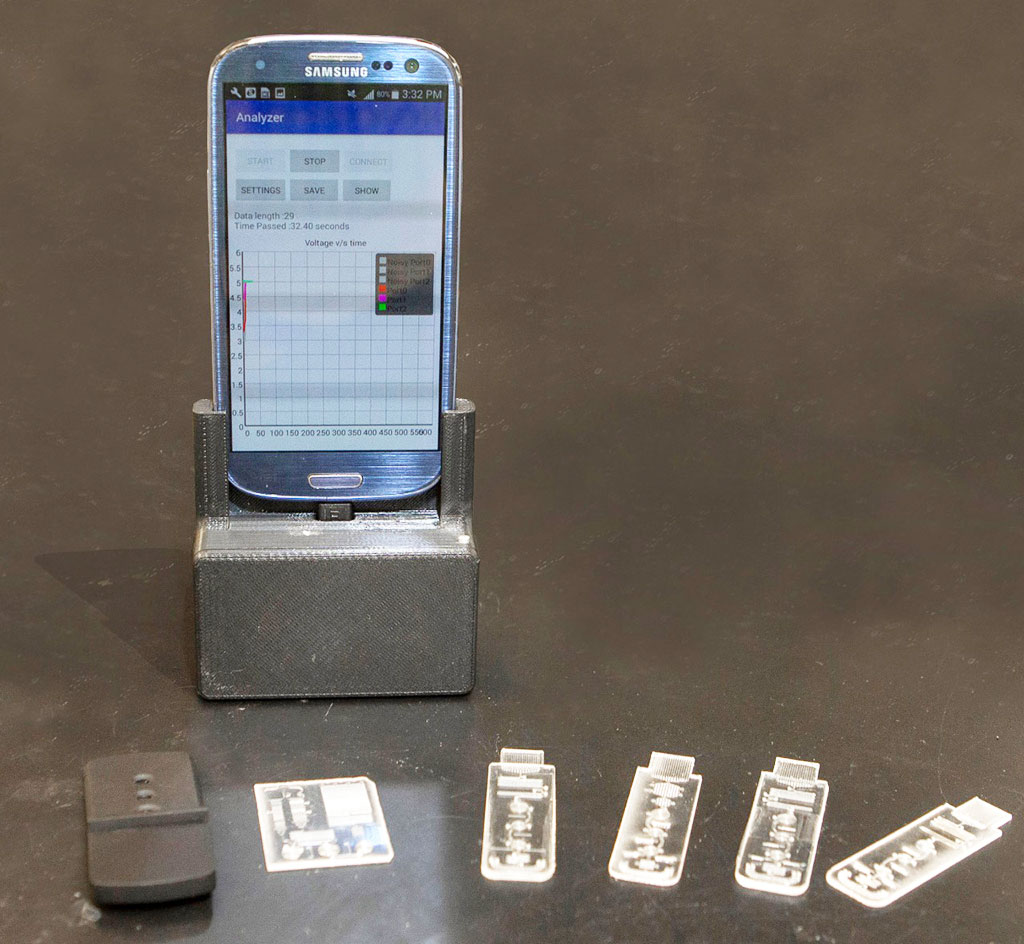Autonomous Microchannel Analyzer Combines with Smartphone for Off-Site Disease Diagnostics
By LabMedica International staff writers
Posted on 18 Feb 2020
A novel microchannel capillary flow assay platform for detection of pathogenic microorganisms or other antigens combines with a smartphone for display, data transfer, storage, and analysis.Posted on 18 Feb 2020
Investigators at the University of Cincinnati (OH, USA) built the microchannel capillary flow assay (MCFA) platform to perform chemiluminescence based ELISA tests with lyophilized chemiluminescent reagents. The MCFA platform exploits the ultra-high sensitivity of chemiluminescent detection while eliminating the shortcomings associated with liquid reagent handling, control of assay sequence, and user intervention.

Image: The photo shows a portable lab that plugs into a smartphone to diagnose diseases like malaria or coronavirus (Photo courtesy of Joseph Fuqua II, University of Cincinnati Creative Services)
Functionally designed microchannels along with adequate hydrophilicity provided by the saliva sample produce a sequential flow of assay reagents, and the device autonomously performs the ultra-high sensitive chemiluminescence based ELISA. An attached smartphone for display, data transfer, storage and analysis, as well as the source of power, enabled the development of a point-of-care-testing (POCT) analyzer for disease diagnostics.
The current report described the use of the MCFA device for detection of the malaria biomarker PfHRP2. For this antigen a limit of detection (LOD) of eight nanograms per milliliter was achieved, which is sensitive enough to detect active malarial infection.
Furthermore, the investigators assert that the device can be adapted to diagnose other infectious diseases such as coronavirus, HIV or Lyme disease or innumerable other health conditions such as depression and anxiety.
"The performance is comparable to laboratory tests. The cost is cheaper. And it is user-friendly," said senior author Dr. Chong Ahn, distinguished university research professor at the University of Cincinnati. "We wanted to make it simple so anyone could use it without training or support. Right now it takes several hours or even days to diagnose in a lab, even when people are showing symptoms. The disease can spread."
The MCFA device was described in the January 27, 2020, online edition of the journal Microsystems & Nanoengineering.
Related Links:
University of Cincinnati














